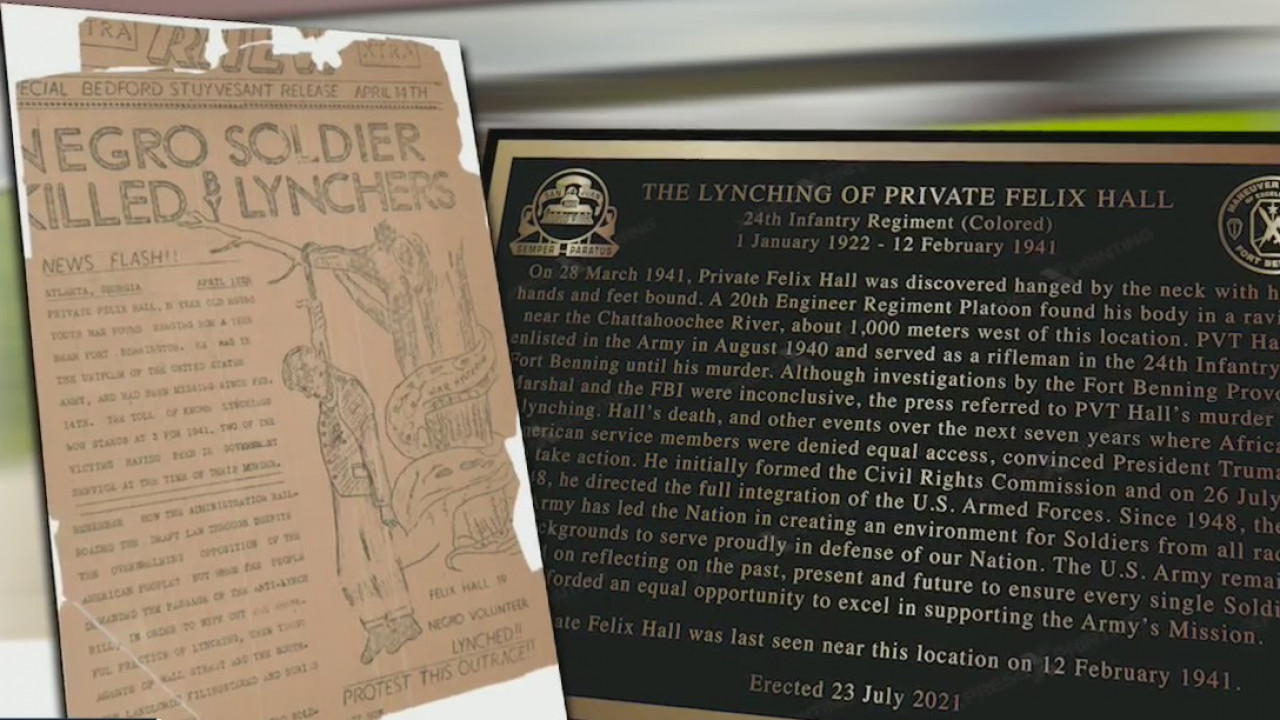
I-Team: Army officially remembers only lynching victim on military installation
By Randy Travis Published 8/2/2021 FORT BENNING, Ga. - For 80 years, thousands of soldiers have passed through Fort Benning, unaware of its tragic place in American history: the site of what’s believed to be the only lynching on a U.S. military installation. On Tuesday, the Army plans to make sure future soldiers will know. Dignitaries will gather near the spot where Private Felix Hall was last seen alive. A plaque will be unveiled. His story will finally be told there. "Horrific … inhumane … it’s difficult to talk about … very disturbing," said Col. Michael Tremblay, chief of staff for the Maneuver Center of Excellence at Fort Benning. So why now? "To have a clear-eyed view of history," Tremblay answered. "Both the good and the bad at Fort Benning." Eighty years ago the US Army was still segregated, Black soldiers housed and fed in the so-called colored section of Fort Benning. Thousands of volunteers were pouring in to join the 24th Infantry Regiment in 1941. They would be known as the Buffalo Soldiers. Pearl Harbor was still months away. One of those Black soldiers, 19-year-old Private Felix Hall, was assigned to work at the sawmill located on Fort Benning property. According to the FBI case file, on Feb. 12, 1941, Hall knocked off work and told his buddies he was heading to the PX. Hall never made it. Six weeks later a platoon of engineers training in the woods came upon Hall’s decomposing body tied to a sapling in a ravine. A rope tied around his neck. His feet were bound with baling wire. His hands were also tied. Hall had been strung up still alive. According to the FBI investigation, a pile of dirt under Hall’s body indicated he had tried unsuccessfully to dig out of the side of the ravine with his feet so he might have something to stand on. There are no surviving photographs of Felix Hall when he was alive. Only the crime scene photos showing how he died. So who murdered Felix Hall? According to the FBI case file, investigators decided the crime had to involve multiple people. They focused on a pair of white sergeants who lived along the route Hall would have taken to get to the Post Exchange. They even matched the rope used in the lynching to rope found in the house the two suspects shared. But that rope was commonly used all over Fort Benning. One of the sergeants denied his involvement. The other had already been shipped out. The case was ultimately closed. No one was ever arrested for what would be the only lynching on a U.S. military installation. It would take 80 years for the military to finally acknowledge the crime. To finally start seeing Private Hall. "It was done in the dark, but it’s finally come to the light," agreed another of Hall’s relatives, Lillian Fenderson-Lykes. Why the delay? "We just weren’t aware," admitted Col. Tremblay. Not until 2016, when the Washington Post reported on the long-forgotten tragedy. The story attracted the attention of Georgia Congressman Sanford Bishop. When Major General Patrick Donahoe took command at Fort Benning, Bishop asked him to correct the record. Down the road in Montgomery, his name is inscribed in the National Memorial For Peace and Justice along with the other 4400 lynching victims in the US. On Tuesday, a new marker will remember what happened. This time, where it happened.

